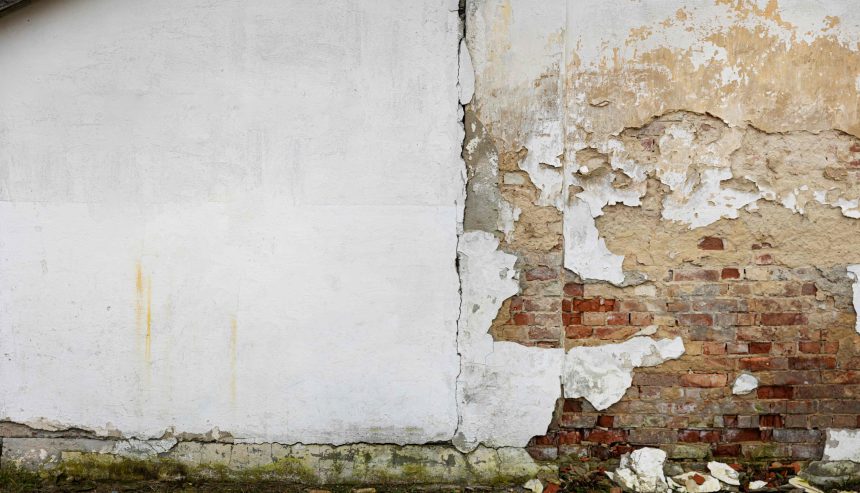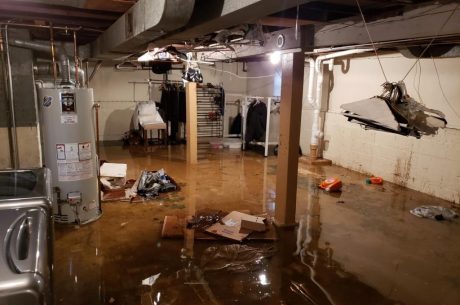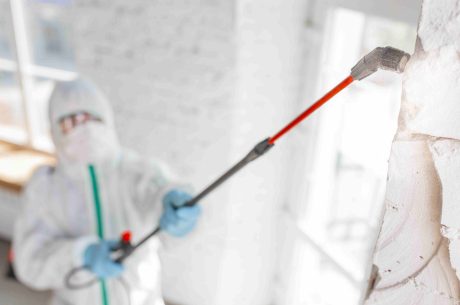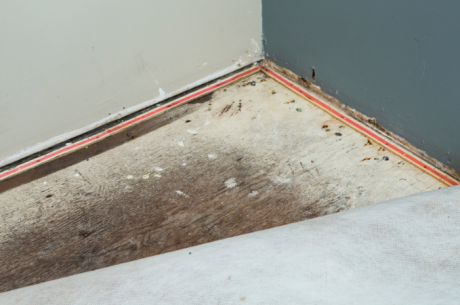Water damage is a common and potentially serious issue that homeowners may face. Among its numerous repercussions, mold growth signs of water damage on walls stands out as a significant concern. Mold not only weakens the structural integrity of walls but also poses health risks to inhabitants. Therefore, recognizing the warning signs of water damage and identifying mold growth early on is crucial in preventing further deterioration and costly repairs.
In this article, we’ll present the evident signs of water damage in walls, focusing specifically on identifying mold growth. By familiarizing yourself with these signals, you can promptly address the issue and safeguard your home and well-being.
What Is Water Damage?
Water damage refers to unwanted moisture in areas where it can cause harm. This damage can arise due to various factors such as leaks, floods, plumbing issues, or excessive humidity. For example, when water enters a building, it can seep into walls, floors, ceilings, and other structural components, leading to many problems.
In the case of walls, water damage can have several visible signs, including discoloration, staining, peeling paint, bulging or cracking surfaces, and a musty odor. In addition, water in walls creates an ideal environment for mold growth, which can further deteriorate the structure and pose health risks. Mold proliferates in moist conditions and can spread rapidly, causing cosmetic issues, potential respiratory problems, and allergies.
To prevent water damage in walls, it is essential to promptly address any potential sources of moisture intrusion. Regular maintenance of plumbing systems, roof inspections, and adequate ventilation can help minimize the risk. If the damage is detected, it is crucial to recognize and fix the source of the problem, dry the affected area thoroughly, and consider professional water damage remediation to prevent further damage and mold growth.
Causes
Mold growth can be a severe issue in homes and buildings, leading to structural damage and potential health risks for occupants. However, understanding the causes of mold development is crucial in preventing its occurrence and addressing any existing problems. Here are the six causes of mold growth:
- Water damage: Hidden plumbing leaks, condensation problems, and flooding can introduce moisture into building materials, creating an environment conducive to mold development.
- Inadequate Ventilation: Poor airflow and ventilation can trap moisture within enclosed spaces, promoting mold proliferation. Limited air circulation behind appliances or beneath sinks can contribute to this problem.
- High Humidity Levels: Excessive moisture in the air, often caused by high humidity levels, can lead to mold. Areas with inadequate ventilation or moisture control are particularly susceptible.
- Porous Building Materials: Materials such as drywall, wood, and carpet can absorb and retain moisture. When these materials become wet, they provide an ideal breeding ground for mold.
- Water Intrusion: Visible discoloration along interior walls, ceilings, and floors can indicate water intrusion from internal and external sources. These areas should be inspected for potential mold development.
- Condensation: Cold weather temperatures can cause condensation on surfaces, especially on exterior walls. These areas may experience higher rates of moisture accumulation and, subsequently, mold development.
It’s essential for homeowners to be mindful of these causes and to promptly address any water damage or moisture issues to prevent mold advancement. Regular inspection, maintenance, and addressing water-related problems can help mitigate the risk of mold infestations.
Visual Cues of Water Damage in Walls
When assessing water damage in walls, it’s essential to identify any visual cues pointing to a more significant issue. Signs of water damage can include staining on the wall and discoloration. Sometimes, paint or wallpaper may be bubbling up from the wall itself. These are all signs that moisture is trapped inside the wall and could lead to further issues, such as mold advancement, if not addressed quickly.
Another sign of potential water damage is warping in the baseboard around the bottom of the wall. If you have wood floors, these boards should sit flush against them; if they appear warped or loose, this could indicate that there has been flooding below your floorboards and within your walls. You might also notice a damp, musty smell when entering a room with potential water damage – this could suggest mold growth signs of water damage in walls, which needs to be investigated immediately to determine if it requires mold removal and remediation.
If you believe there may be an inherent problem with the structure of your home due to water damage, consulting a professional would be advisable before undertaking any repairs yourself. They will be able to evaluate the full extent of any damages and recommend how best to repair them safely and effectively.
How to Spot
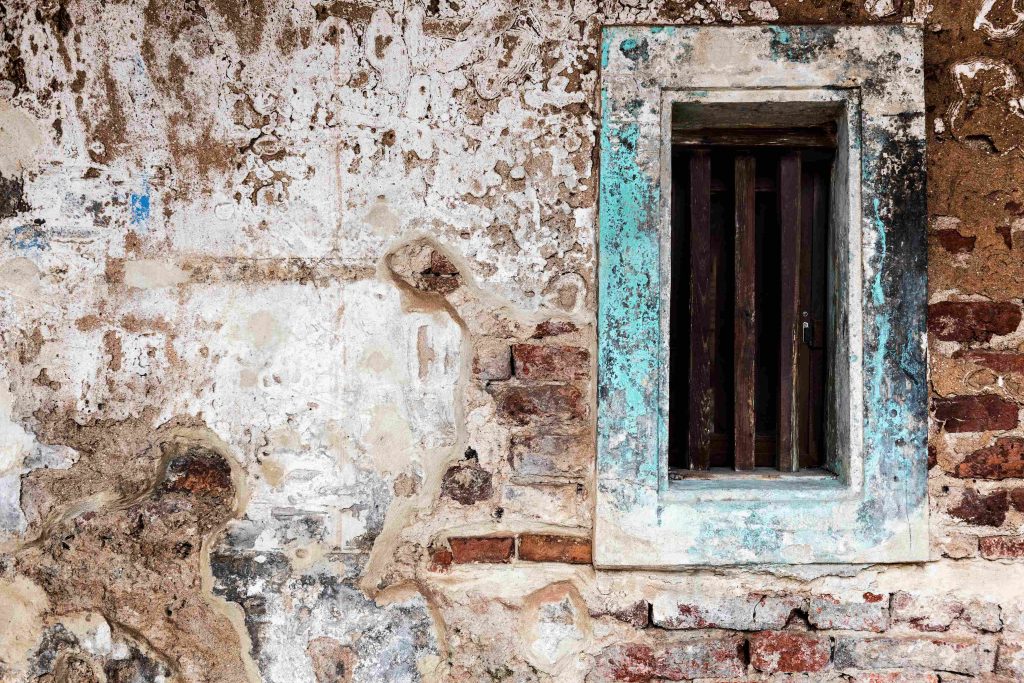
Mold poses health risks and indicates underlying moisture problems that need to be addressed promptly. Hence, detecting mold advancement in walls is crucial to prevent further damage and ensure a safe living environment. So here are the ways how to spot mold development:
- Visual Inspection: Look for visible signs of mold on walls, ceilings, or other surfaces. Mold can appear as black, green, brown, or white patches and may have a fuzzy or slimy texture. Pay close attention to sites that are prone to water exposure, such as bathrooms, kitchens, basements, and areas with plumbing.
- Musty Odor: Mold often emits a strong, musty odor. If you notice a persistent musty smell, it could indicate the presence of mold even if you can’t see it.
- Water Stains and Discoloration: Check for water stains, discoloration, or peeling paint on walls and ceilings. These can be signs of past or ongoing water intrusion, creating a favorable mold proliferation environment.
- Unexplained Health Symptoms: If you or others in your household experience unexplained allergic reactions, respiratory issues, or other health problems that improve when you leave the premises, it could be due to mold proliferation.
- Hidden Areas: Mold can grow in hidden or hard-to-reach areas, such as behind wallpaper, inside wall cavities, or under carpets. Pay attention to any sites with previous water damage or high humidity levels.
- Moisture Detection Tools: Consider using specialized tools to detect hidden moisture and potential mold. Infrared cameras can help identify temperature differences that may indicate moisture intrusion. Hygrometers measure humidity levels, and moisture meters can detect moisture content in various materials.
- Professional Inspection: If you suspect mold but are unsure or unable to locate it, consider hiring a professional mold inspector. They have the proficiency and tools to identify mold development, assess its severity, and provide recommendations for remediation.
Solutions for Repairing Water Damage in Walls
Water damage in walls can be a significant problem, leading to structural issues and potential health hazards from mold. There’s a step-by-step guide to water remediation you can follow. But to give you an overview, here are the six solutions you should take into account when repairing water damage:
– Identify the Source
Before repairing the walls, it is crucial to identify and fix the leading cause of the water damage. It may involve addressing plumbing issues, fixing broken pipes, or resolving any other sources of water intrusion.
– Assess the Extent of Damage
Evaluate the severity of the damage to determine the appropriate repair approach. For example, small areas of damage can be cut out and replaced, while larger areas may require more extensive repairs.
– Remove Wet Materials
Remove any wet or damaged materials, such as wet drywall, insulation, or wallpaper, to prevent mold advancement. Then, use a knife to cautiously cut out the affected sections, ensuring clean edges for easier replacement.
– Dry the Area Thoroughly
It is essential to thoroughly dry the affected area before proceeding with repairs. Use dehumidifiers, fans, or other drying equipment to eliminate moisture and prevent mold. Monitor the moisture levels to ensure the area is completely dry.
– Replace Damaged Materials
Replace the removed materials with new ones. It may involve installing new drywall, insulation, or wallpaper. Ensure proper installation and secure attachment to prevent future water damage.
– Reinforce Structural Components
In cases where the water damage has affected the structural integrity of the walls, it may be necessary to reinforce or replace framing beams, joists, or other supporting elements. Consult with an expert or contractor for more extensive repairs.
Following these steps can effectively repair wall water damage and prevent future issues. However, if the damage is widespread or you need clarification on the repairs, consulting with a professional contractor specializing in water damage restoration is recommended.
Final Thoughts
Water damage in walls is a serious problem that needs to be addressed quickly. Identifying the signs of water damage and mold growth can help you take the necessary steps to prevent further issues from occurring. However, it’s crucial to remember that even if it looks like minor water damage, there could still be significant underlying issues. If you notice any visual cues such as discoloration, bulging, or musty odors in your home, contact an experienced professional for help.
If you need reliable assistance with water damage and mold issues, PuroClean Pembroke Pines provides expert solutions. Don’t wait until the problem worsens; take proactive measures to save time and money. Contact us today for immediate and professional assistance.
